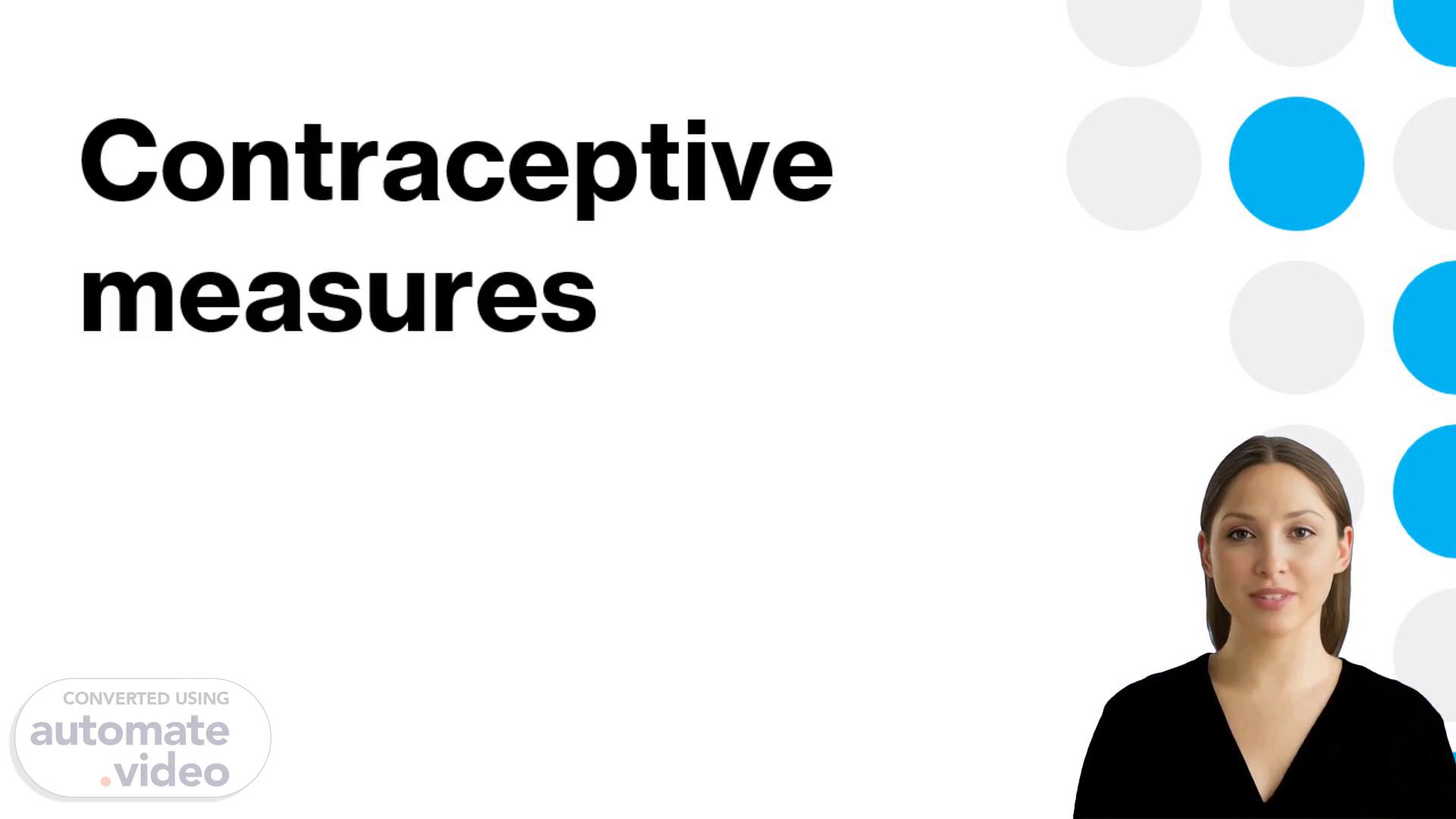
Page 1 (0s)
[Virtual Presenter] Welcome everyone. Today we will be discussing the various forms of contraception available with a focus on sterilization. We will look into the types of sterilization and the steps involved in the procedure as well as the effectiveness and reversibility of this form of contraception. Let's get started!.
Page 2 (21s)
[Audio] Contraception is the practice of taking measures to prevent pregnancy. Various methods can be used such as hormonal medications physical barrier methods intrauterine devices male and female sterilization lactational amenorrhea methods fertility awareness-based methods and withdrawal. It is advisable to consult a healthcare professional to find out which option is best suited to your needs..
Page 3 (49s)
[Audio] IUDs known also as intrauterine devices are a commonly used form of long-acting reversible contraception otherwise known as larc. These devices are inserted into the uterus to prevent pregnancy. There are two types of IUDs: hormonal and copper. Hormonal I-U-D--s deliver a small quantity of progestin a synthetic hormone into the uterus which thickens the cervical mucus to block sperm and thins the uterine lining. Copper I-U-D--s have copper that causes an inflammatory response which makes the uterus an unsuitable environment for sperm and eggs. I-U-D--s are highly effective safe and convenient; some even last up to three to 10 years. I-U-D--s are inserted into the uterus by a healthcare provider and can be taken out whenever desired..
Page 4 (1m 46s)
[Audio] Contraception is an essential part of responsible sexual health and condoms are an effective way to prevent unintended pregnancy and the spread of sexually transmitted infections. Convenience and versatility make condoms an attractive option since they can be found in different materials and used in tandem with other contraceptives to ensure maximum protection..
Page 5 (2m 11s)
[Audio] Contraceptive implants are a great option for those seeking a prolonged contraceptive solution. Insertion of the implant grants up to three years of protection without further maintenance. They are discreet and highly efficient and can be removed quickly by a healthcare provider. Consequently contraceptive implants offer a convenient reliable and effective means of pregnancy prevention..
Page 6 (2m 35s)
[Audio] Contraception is an integral component of family planning and sterilization is one of the options for those who wish to forgo the possibility of getting pregnant permanently. It involves surgical measures that impede sperm and egg from fusing together. For men this is referred to as a vasectomy wherein the sperm-carrying tubes from the testicles are cut or sealed. Women may undergo tubal ligation or tubal occlusion which involves cutting blocking or sealing the fallopian tubes to keep eggs from reaching the uterus and sperm from getting to the egg. Both male and female sterilization are widely considered to be the most successful forms of birth control available..
Page 7 (3m 18s)
[Audio] Fertility awareness methods can be used to either avoid or plan for pregnancy. These methods involve tracking different cycles and identifying fertility windows in order to gain greater knowledge of your reproductive health. This includes tracking your basal body temperature cervical mucus and/or ovulation timing to help you determine the days you're most likely to get pregnant. It's important to understand these methodologies to make an informed decision about contraceptive measures..
Page 8 (3m 49s)
[Audio] Contraceptive measures can provide individuals and couples with the knowledge and ability to make informed decisions about when they want to have children. They can be utilized to plan ahead and avoid any unplanned or unintended pregnancies. By having a variety of contraceptive choices people can have more control over their reproductive health and determine the ideal time to have children and how many children they want to have..
Page 9 (4m 16s)
[Audio] Contraceptive measures are essential for safeguarding both maternal and child health as well as promoting gender equality. Adequate access to contraception can lower maternal mortality rates while simultaneously enhancing the health outcomes of both mothers and babies. It also gives women more autonomy to explore educational professional and personal objectives without the constraints of unplanned pregnancies. Contraceptive use encourages couples to take responsibility for family planning which ultimately will lead to a more equal society..
Page 10 (4m 53s)
[Audio] Contraception is an important part of reproductive healthcare. It provides individuals with the power to make informed decisions and choices on their reproductive health as well as access to a range of contraceptive methods that can help prevent unwanted pregnancies and STIs. Effective contraceptive methods allow individuals to manage their fertility helping them to plan their pregnancies and protect their health. Moreover it also helps reduce poverty; allowing families to better manage their resources and contributing to the overall development of society. " Contraceptives are an essential part of reproductive health. They provide individuals with the ability to make informed decisions about their reproductive health and to access a variety of options to help prevent unwanted pregnancies and the spread of sexually transmitted infections. Contraceptives are also beneficial in planning pregnancies protecting health and reducing poverty. Effective contraception allows families to better manage resources and can contribute to the overall development of society..
Page 11 (5m 59s)
THANK YOU FOR WATCHING.